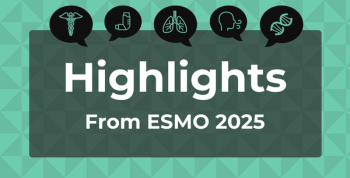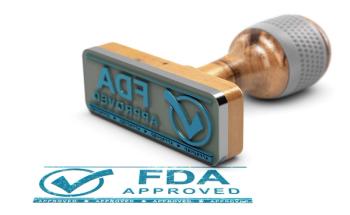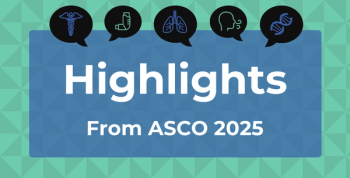
Multidisciplinary Approaches to Pediatric Obstructive Sleep Apnea: A Review of Respiratory Therapies
Key Takeaways
- Pediatric OSAS treatment is shifting towards a tailored, multidisciplinary approach, moving beyond a one-size-fits-all model.
- Adenotonsillectomy is the standard first-line treatment, improving sleep and quality of life, but residual OSAS affects some children.
The treatment of pediatric obstructive sleep apnea syndrome is moving toward a personalized, multidisciplinary approach that combines surgical options with a growing number of nonsurgical alternatives, to better address the unique needs of each child.
Treating pediatric
Pediatric OSAS is a disorder characterized by episodes where a child's breathing is briefly and repeatedly interrupted during sleep.2 The condition occurs due to a narrowing or blockage of the upper airway, preventing the flow of air.
With a prevalence of 1.2% to 5.7%, OSAS is most common in children aged 2 to 8 years.3 This mirrors the peak growth of tonsil and adenoid tissue, which is the main cause of airway narrowing in OSAS. Other factors that contribute to the condition include obesity, craniofacial abnormalities, and increased nasal resistance.
Researchers aimed to provide an updated overview of current treatment modalities for pediatric OSAS, offering clinicians practical guidance for tailoring therapy to the unique characteristics of each child.1
Surgical Approaches
Adenotonsillectomy is the standard first-line treatment for pediatric OSAS, significantly improving sleep and quality of life for most children.1 However, residual OSAS can affect 18% to 20% of children, particularly those who are obese or have severe baseline disease. This underscores the need for a risk-stratified postoperative approach.
For tonsillectomy, extracapsular (total) removal is the standard, while intracapsular (partial) removal offers short-term benefits but carries a higher risk of regrowth and repeat surgery. While newer partial removal techniques are being explored, total tonsillectomy remains the more reliable approach for lasting symptom control. A personalized surgical plan based on individual patient characteristics is essential, and more research is needed to guide future practice.
For complex cases, especially in children with obesity or craniofacial anomalies, additional surgeries may be necessary. These procedures, such as tongue base surgery or palate procedures, target specific areas of airway obstruction. A multidisciplinary approach, often guided by drug-induced sleep endoscopy, is crucial to tailor these interventions. In rare, severe cases, a tracheostomy may be the definitive option.
NonSurgical Therapies
Pharmacological options like intranasal corticosteroids and montelukast can be used for mild OSAS or as an add-on to surgery, but more long-term data on their safety and effectiveness is needed. Montelukast, in particular, carries an FDA black box warning for neuropsychiatric side effects, making short-term use advisable.
Positive airway pressure (PAP) therapy, especially continuous PAP (CPAP), is the main nonsurgical alternative to adenotonsillectomy. While effective, patient adherence is a major challenge. Other PAP forms such as autoimmune pulmonary alveolar proteinosis and bilevel positive airway pressure have more limited applications. High-flow nasal cannula is a well-tolerated alternative for infants and children who cannot use CPAP.
Orthodontic treatments such as rapid maxillary expansion and mandibular advancement appliances, along with myofunctional therapy, are emerging as promising options for mild-to-moderate OSAS. However, more large-scale, long-term studies are needed to solidify their role in clinical practice.
Hypoglossal nerve stimulation is an innovative neuromodulation therapy that significantly reduces the Apnea-Hypopnea Index in children with Down syndrome, though it requires specialized expertise. Other emerging treatments include positional therapy and novel medications such as a combination of atomoxetine (Strattera; Eli Lilly and Company) and oxybutynin (Ditropan; Janssen Pharmaceuticals).
These therapies offer valuable alternatives for patients with residual disease or poor adherence to conventional treatments. However, further research is necessary to establish their long-term safety, efficacy, and proper integration into clinical care.
“Each pediatric patient with OSAS should receive a personalized treatment plan tailored to their age, comorbidities, disease severity, and ability to adhere to or tolerate specific therapies,” study authors concluded.
References
- Panetti B, Federico C, Francesco G, et al. Three decades of managing pediatric obstructive sleep apnea syndrome: what’s old, what’s new. Children. 2025;12(7):919-919. doi:10.3390/children12070919
- Pediatric obstructive sleep apnea - symptoms and causes. Mayo Clinic. 2018. Accessed August 12, 2025.
https://www.mayoclinic.org/diseases-conditions/pediatric-sleep-apnea/symptoms-causes/syc-20376196 - Petrongari D, Ciarelli F, Di Filippo P, et al. Risk and protective factors for obstructive sleep apnea syndrome throughout lifespan: from pregnancy to adolescence. Children (Basel). 2025;12(2):216. Published 2025 Feb 12. doi:10.3390/children12020216
Newsletter
Stay ahead of policy, cost, and value—subscribe to AJMC for expert insights at the intersection of clinical care and health economics.







































